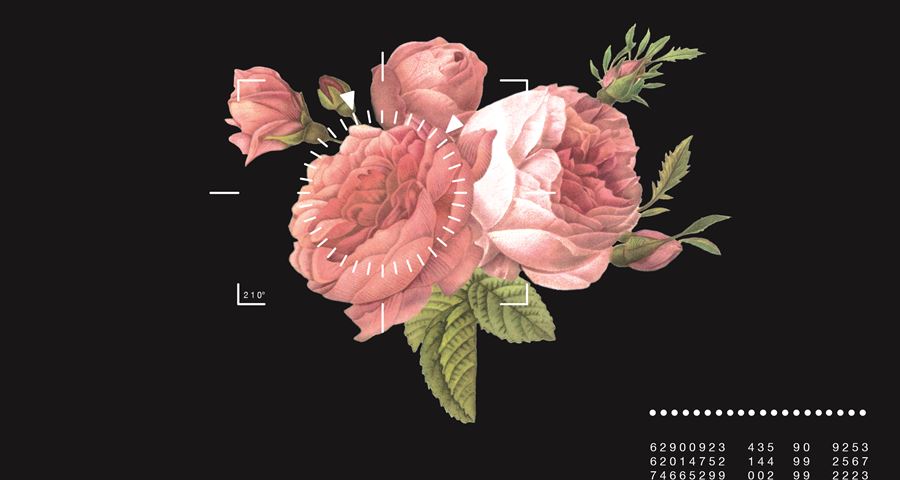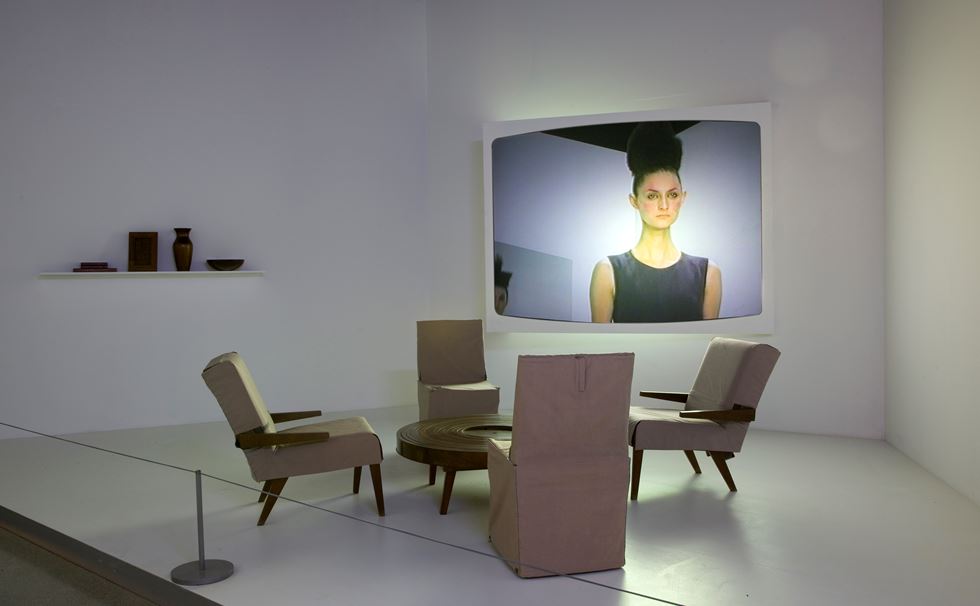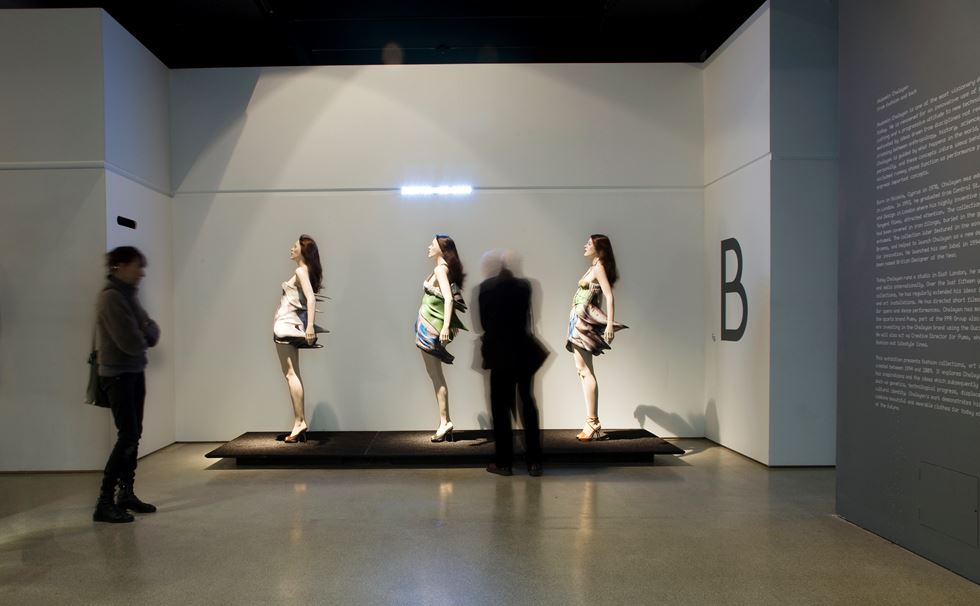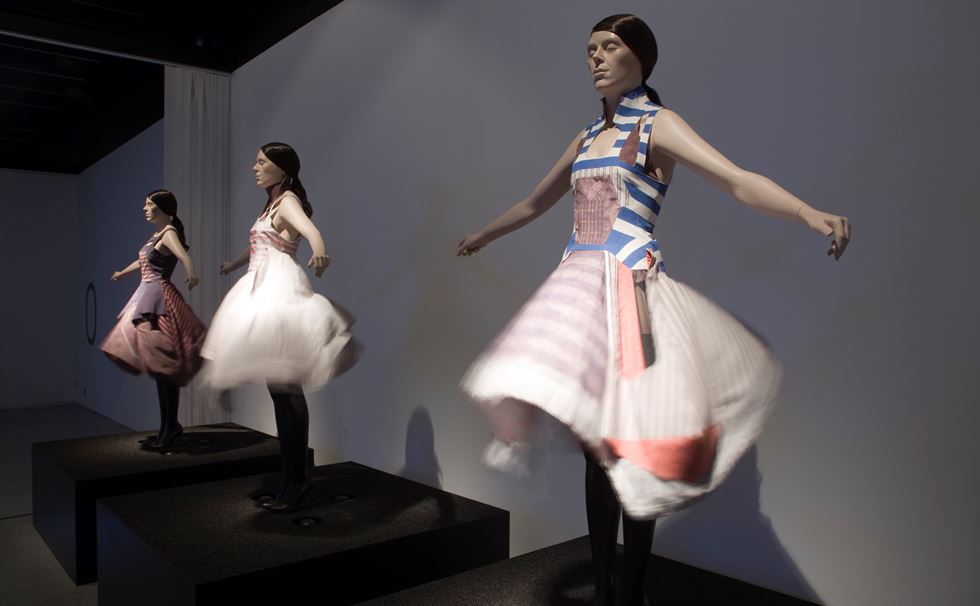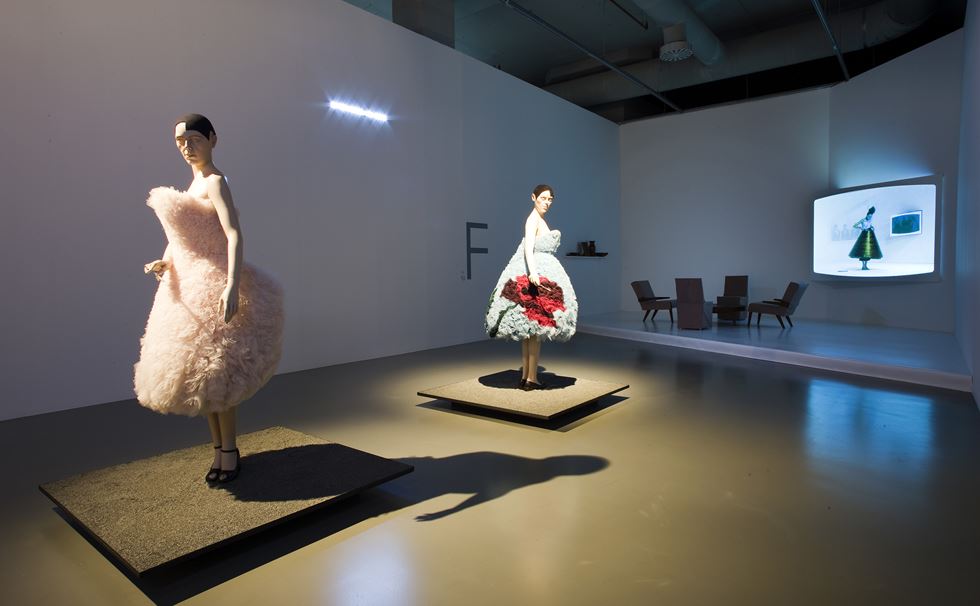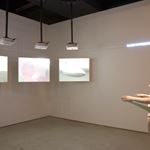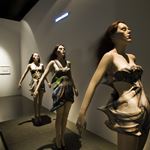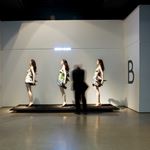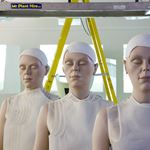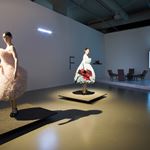Profile
Hussein Chalayan
Hussein Chalayan is one of the most visionary designers working in fashion today. He is renowned for an innovative use of materials, meticulous pattern cutting and a progressive attitude to new technology. His pioneering work is motivated by ideas drawn from disciplines not readily associated with fashion, crossing between anthropology, history, science, philosophy and technology. Chalayan is guided by what happens in the world and by what engages him personally, and these concepts inform ideas behind his collections. His acclaimed runway shows function as performance pieces which allow him to express important concepts.
Born in Nicosia, Cyprus, in 1970, Chalayan was educated in Cyprus and later in London.
His early years were spent living between two different cultures, Cyprus and the UK, and this has led to a particular interest in ideas such as cultural identity, nation states, migration and dislocation. Displacement is a recurring theme in his work. The history and multi-faceted aspect of the region from where he originates continues to inspire him. For Chalayan, it is a meeting point for so many different cultures — he describes himself as being part-Aegean, part-Anatolian, part-Balkan and part-Mediterranean filtered through the synthesiser of London.
In 1993, he graduated from Central St. Martins College of Art and Design in London where his highly inventive graduate collection, The Tangent Flows, caused a sensation. The collection featured decomposed silk dresses that had been covered in iron filings, buried in the ground for months and then exhumed. The collection later featured in the window of the London retailer Browns, and helped to launch Chalayan as a new designer with a reputation for innovation. He launched his own label in 1994 and, since then, has twice been named British Designer of the Year.
Chalayan describes his work as being a narrative — a form of storytelling, incorporating different themes. His shows are designed to be a cultural experience for the spectator. Many of the themes explored in his work derive from his own personal history and cultural identity combined with his experiences living and working in London.
Today, Chalayan runs a studio in East London. He shows bi-annually in Paris and sells internationally. 2015 saw the launching of his flagship store in London's Mayfair. Over the last twenty years, alongside his fashion collections, he has regularly extended his ideas into museum exhibitions and art installations. He has directed short films and designed costumes for opera and dance performances. 'Gravity Fatigue' was his first theatrical work, a dance performance in collaboration with Damien Jalet that premiered at London's Sadler's Wells Theatre on October 2015. Chalayan is Creative Director for Puma, design consultant for the french heritage brand Vionnet and Head of the Fashion Department at the University of Applied Arts in Vienna
Chalayan’s creative approach, his inspirations and the ideas which subsequently influence his work range from genetics and technological progress to displacement, migrancy and cultural identity. He uses clothing as a site of exploration, to express concepts and make them accessible to a wider audience. He creates event spaces in the form of films, installations and exhibitions, as well as experimenting with new and innovative materials and techniques. His garments are imbued with the thought processes behind them. His 2009 collection, Inertia, explored the implications of speed and technology on our lives with garments encapsulating the moment of a crash; Afterwords responded to the theme of displacement in which furniture transforms itself into garments; Airborne used LED technology, incorporating thousands of flickering lights; and Readings features dresses comprising over two hundred moving lasers, presenting an extraordinary spectacle of light. Chalayan’s pioneering work crosses many different disciplines, with inspiration coming from architecture, science, philosophy and anthropology. His uniquely interdisciplinary approach makes him one of the most inspiring designers working in contemporary fashion. He has a unique ability to combine beautiful and wearable clothes for today with an intriguing vision of the future.
Image Credits
Inertia Spring/Summer 2009, Luke Hayes
Airborne Autumn/Winter 2007, Luke Hayes
Panoramic Autumn/Winter 1998, Luke Hayes
Readings Spring/Summer 2008, Moritz Waldemeyer
Afterwards 2000, Chris Moore
Temporal Meditations Spring/Summer 2004, Luke Hayes
Inertia Spring/Summer 2009, Chris Moore

